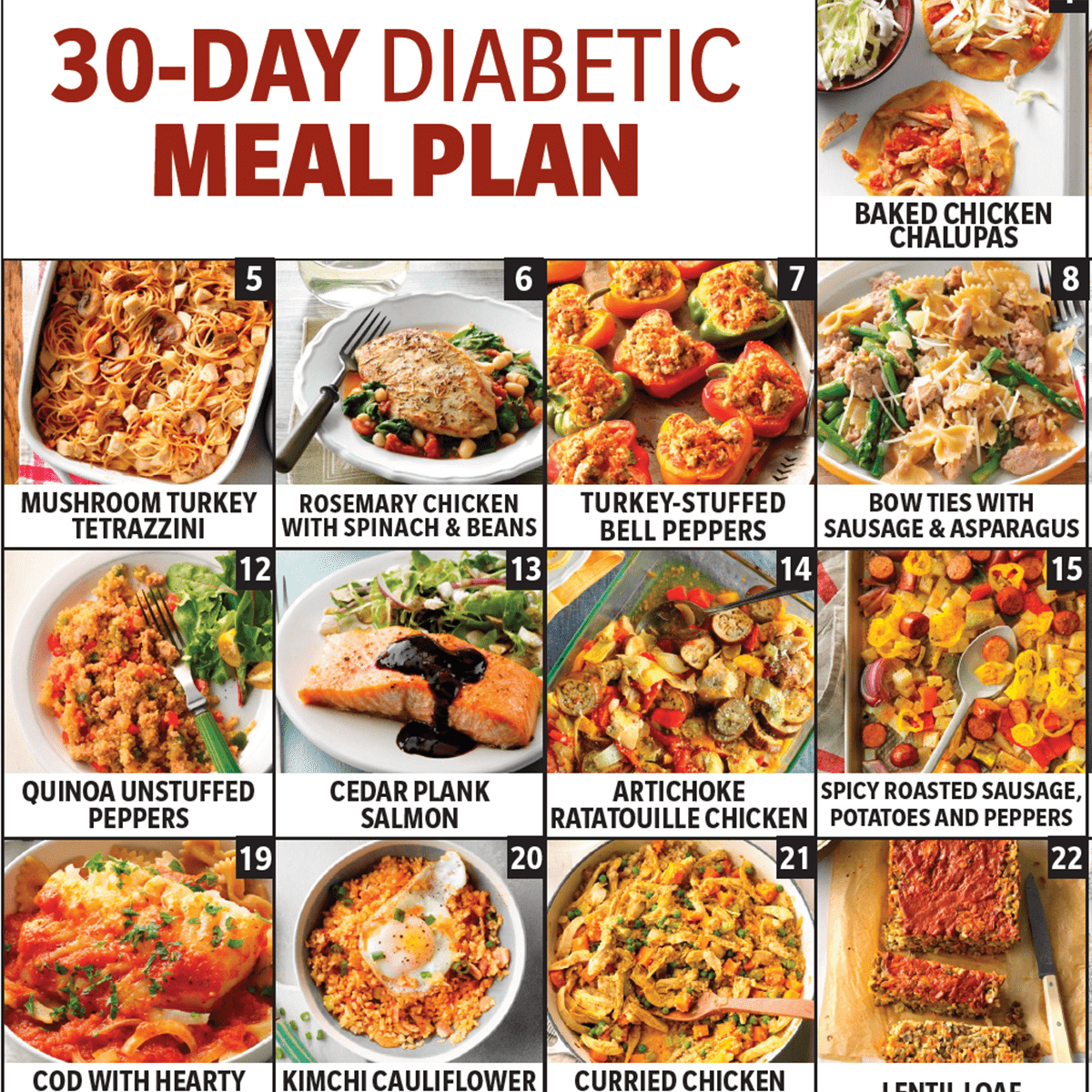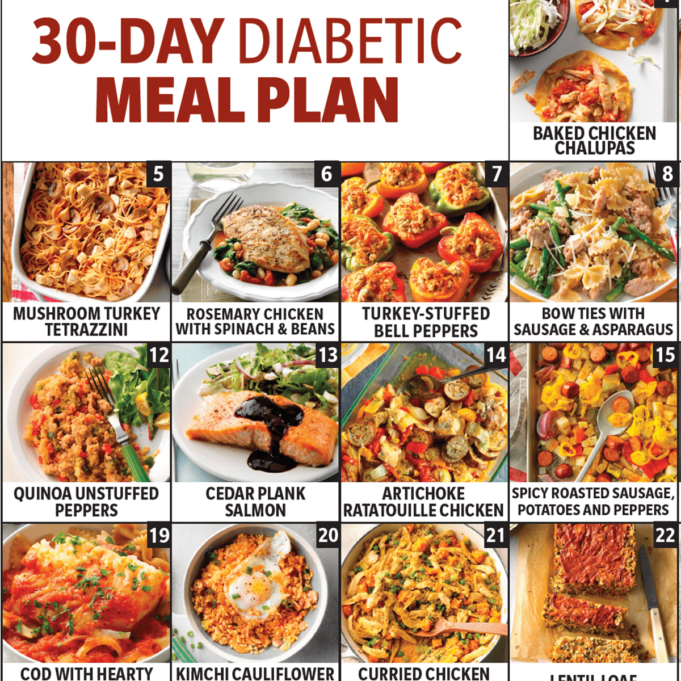What is the best diet for diabetics? It’s a question that many people with diabetes ask, and the answer is not always simple. While there’s no one-size-fits-all solution, understanding the basics of a diabetic-friendly diet can be the key to managing blood sugar levels and living a healthier life.
Imagine your body as a finely tuned engine – it needs the right fuel to run smoothly, and that fuel comes in the form of a balanced diet.
Diabetes is a chronic condition that affects how your body regulates blood sugar. This means that making smart food choices is essential for preventing spikes and dips in your blood sugar levels. Think of it like a rollercoaster – you want to avoid the wild highs and lows and aim for a smooth, steady ride.
This is where the right diet comes in, acting as the safety harness that keeps you on track.
Understanding Diabetes and Diet
Diabetes is a chronic condition that affects how your body regulates blood sugar levels. It’s like your body has a faulty thermostat for glucose, and it can’t keep things running smoothly. A healthy diet is a vital part of managing diabetes, helping you keep your blood sugar levels in check and prevent complications.
Types of Diabetes and Their Dietary Needs
There are different types of diabetes, and each type has its own unique dietary needs.
- Type 1 Diabetes:This type is an autoimmune disease where the body’s immune system attacks and destroys the insulin-producing cells in the pancreas. Individuals with Type 1 diabetes need to take insulin injections or use an insulin pump to regulate their blood sugar levels.
Their diet should focus on consistent carbohydrate intake throughout the day to ensure stable blood sugar levels.
- Type 2 Diabetes:This type is characterized by insulin resistance, meaning the body doesn’t use insulin properly. It’s often linked to lifestyle factors like obesity and lack of physical activity. Individuals with Type 2 diabetes can manage their condition through a healthy diet, regular exercise, and sometimes medication.
Their diet should emphasize whole foods, lean protein, and healthy fats, while limiting processed foods and sugary drinks.
- Gestational Diabetes:This type develops during pregnancy and usually resolves after delivery. It’s caused by hormonal changes that make it difficult for the body to use insulin effectively. Women with gestational diabetes need to carefully manage their blood sugar levels through diet and sometimes insulin therapy to ensure a healthy pregnancy for both mother and baby.
Their diet should focus on balanced meals with controlled carbohydrate intake.
Benefits of a Healthy Diet for Diabetics
Eating a healthy diet can provide numerous benefits for individuals with diabetes. It’s like giving your body a superpower to fight off the negative effects of the condition.
- Improved Blood Sugar Control:A healthy diet can help regulate blood sugar levels, reducing the risk of complications like nerve damage, heart disease, and kidney problems.
- Weight Management:For people with Type 2 diabetes, losing even a small amount of weight can significantly improve insulin sensitivity and blood sugar control. A healthy diet can help you shed those extra pounds and feel better overall.
- Reduced Risk of Complications:Eating a healthy diet can lower the risk of developing long-term complications associated with diabetes, such as heart disease, stroke, and nerve damage.
- Improved Energy Levels:A balanced diet can provide your body with the nutrients it needs to function optimally, leading to increased energy and reduced fatigue.
- Improved Overall Health:A healthy diet can benefit your overall health, not just your diabetes management. It can help lower blood pressure, improve cholesterol levels, and reduce the risk of other chronic diseases.
Key Dietary Principles for Diabetics

Imagine your blood sugar as a rollercoaster – it needs to stay on an even keel to keep you healthy. That’s where diet comes in! It’s not just about what you eat, but also how much you eat and when.
A well-planned diabetic diet can help keep your blood sugar in check, preventing those pesky spikes and crashes.
The Importance of Blood Sugar Control
Blood sugar control is the name of the game for diabetics. When you eat, your body breaks down carbohydrates into glucose, which enters your bloodstream. Insulin, a hormone produced by your pancreas, helps your body use this glucose for energy.
In diabetes, either your pancreas doesn’t produce enough insulin, or your body can’t use insulin properly. This leads to high blood sugar levels, which can damage your organs over time.
Dietary Components to Focus On and Limit
Carbohydrates
Carbohydrates are the main source of energy for your body, but they also have the biggest impact on blood sugar levels. It’s not about eliminating carbs entirely, but choosing the right ones.
- Focus on complex carbohydrates:These are found in whole grains, fruits, vegetables, and legumes. They digest slower, leading to a gradual rise in blood sugar levels.
- Limit simple carbohydrates:These are found in refined grains, sugary drinks, and processed foods. They digest quickly, causing a rapid spike in blood sugar levels.
Proteins
Proteins are essential for building and repairing tissues. They also help you feel full and satisfied, which can be helpful in managing your weight.
- Choose lean protein sources:These include poultry, fish, beans, lentils, and tofu.
- Limit processed meats:These are high in saturated fat and sodium, which can be harmful to your health.
Fats
Fats are an important source of energy and help your body absorb certain vitamins.
- Focus on healthy fats:These are found in olive oil, avocados, nuts, and seeds.
- Limit unhealthy fats:These are found in butter, margarine, fried foods, and processed meats.
The Role of Carbohydrates, Proteins, and Fats in a Diabetic Diet
Carbohydrates, proteins, and fats all play a role in managing blood sugar levels. It’s important to understand how each of these macronutrients affects your blood sugar so you can make informed choices about your diet.
Carbohydrates
Carbohydrates are the main source of energy for your body. They are broken down into glucose, which is used by your cells for energy. The rate at which carbohydrates are digested and absorbed into your bloodstream determines how quickly your blood sugar levels rise.
Complex carbohydrates, like those found in whole grains, fruits, and vegetables, are digested slowly and cause a gradual rise in blood sugar levels. This is because they are high in fiber, which slows down digestion.
Simple carbohydrates, like those found in refined grains, sugary drinks, and processed foods, are digested quickly and cause a rapid spike in blood sugar levels. This is because they are low in fiber and are quickly broken down into glucose.
Proteins
Proteins are essential for building and repairing tissues. They also help you feel full and satisfied, which can be helpful in managing your weight.
Proteins have a minimal impact on blood sugar levels. This is because they are broken down into amino acids, which are not directly converted into glucose.
Fats
Fats are an important source of energy and help your body absorb certain vitamins.
Fats have a minimal impact on blood sugar levels. This is because they are not broken down into glucose.
Food Choices for Diabetics
Living with diabetes doesn’t mean you have to kiss delicious food goodbye. In fact, making smart choices can help you manage your blood sugar and still enjoy your meals.
Recommended Foods for Diabetics
Choosing foods that are low in calories, fat, and sugar is key for managing diabetes. Here’s a list of foods that are diabetic-friendly and can help you stay healthy:
- Non-starchy vegetables:These are your best friends! Broccoli, spinach, kale, Brussels sprouts, and asparagus are packed with nutrients and low in carbs, making them excellent choices for diabetics. They’re also a great source of fiber, which helps regulate blood sugar levels.
- Lean protein:Fish, chicken, beans, and tofu are excellent sources of protein without the added fat and calories. Protein helps keep you feeling full and satisfied, making it easier to manage your weight and blood sugar.
- Whole grains:Opt for whole-grain bread, pasta, and brown rice over their refined counterparts. Whole grains are rich in fiber and take longer to digest, helping to stabilize blood sugar levels.
- Fruits:Fruits are a great source of vitamins, minerals, and fiber, but they do contain natural sugars. Choose fruits lower in sugar, like berries, apples, and pears, and enjoy them in moderation.
- Nuts and seeds:These are great snacks that provide healthy fats, fiber, and protein. Choose unsalted and unsweetened varieties for the best health benefits.
Impact of Food Groups on Blood Sugar Levels
Different food groups have varying effects on blood sugar levels. Understanding this can help you make informed choices about what to eat:
| Food Group | Impact on Blood Sugar |
|---|---|
| Carbohydrates | High impact. Simple carbohydrates, like white bread and sugary drinks, cause rapid spikes in blood sugar. Complex carbohydrates, like whole grains and legumes, are digested more slowly and have a gentler effect on blood sugar. |
| Protein | Low impact. Protein is digested slowly and has minimal effect on blood sugar levels. |
| Fat | Minimal impact. Fat does not directly affect blood sugar levels, but it can slow down the absorption of carbohydrates. |
| Fiber | Lowers blood sugar. Fiber slows down the absorption of sugar into the bloodstream, helping to regulate blood sugar levels. |
Sample Meal Plan for a Day, What is the best diet for diabetics
Here’s an example of a healthy meal plan for a diabetic:
Breakfast:Oatmeal with berries and a handful of almonds.
Lunch:Grilled chicken salad with mixed greens, non-starchy vegetables, and a light vinaigrette.
Dinner:Salmon with roasted vegetables and brown rice.
Snacks:A handful of nuts or a piece of fruit.
Practical Tips for Diabetic Eating: What Is The Best Diet For Diabetics
Living with diabetes doesn’t mean you have to kiss your favorite foods goodbye forever. It’s all about making smart choices and mastering the art of mindful eating. Think of it as a delicious adventure, where you learn to navigate the world of food with a little extra care.
Portion Control and Meal Planning
Portion control is your secret weapon in the battle against blood sugar spikes. It’s about knowing how much to eat, not just what to eat. Imagine your plate as a canvas, and you’re the artist, carefully arranging the colors and textures of your meal.
- Visualize:Think of your plate as divided into thirds. One-third should be filled with non-starchy vegetables like broccoli, spinach, or bell peppers. Another third should be a lean protein source like grilled chicken, fish, or tofu. The final third is reserved for a complex carbohydrate like brown rice, quinoa, or whole-wheat bread.
- Measure Up:Don’t be afraid to use measuring cups and spoons. This can help you get a better understanding of portion sizes. A serving of cooked pasta, for example, is about the size of a tennis ball.
- Plan Ahead:Meal planning is your superhero. It helps you stay on track and avoid those impulsive, sugary temptations. Take some time each week to plan your meals and snacks, and write down your grocery list. This way, you’re less likely to make unhealthy choices when you’re hungry.
Regular Meal Timing and Snacking
Eating at regular intervals is key to keeping your blood sugar levels stable. Think of it like a steady stream of fuel for your body.
- Don’t Skip Meals:Skipping meals can lead to blood sugar fluctuations. Aim for three meals a day with healthy snacks in between.
- Timing is Everything:Try to eat your meals around the same time each day. This helps your body establish a predictable rhythm.
- Smart Snacking:Choose snacks that are low in calories, fat, and sugar. Some great options include fruits, vegetables, nuts, and yogurt.
Reading Food Labels
Food labels are your secret decoder ring. They reveal the nutritional secrets of packaged foods.
- Know Your Numbers:Pay attention to the number of calories, grams of fat, sugar, and carbohydrates per serving.
- Fiber is Your Friend:Look for foods that are high in fiber. Fiber helps slow down the absorption of sugar into your bloodstream, which can help stabilize your blood sugar levels.
- Watch the Sugar:Be wary of added sugars. Look for foods that are low in sugar or contain natural sugars from fruits.
Addressing Specific Dietary Concerns
Now that we’ve covered the basics of diabetic eating, let’s dive into some specific concerns that often arise. We’ll explore the role of fiber, the impact of alcohol, and the use of artificial sweeteners, all while keeping things light and fun!
Fiber’s Role in Diabetes Management
Fiber is your friend when it comes to diabetes. It’s like a superhero in disguise, working behind the scenes to keep your blood sugar levels stable. Fiber is a type of carbohydrate that your body can’t digest, so it passes through your digestive system largely intact.
This means it doesn’t spike your blood sugar levels like other carbs do. Here’s how fiber benefits you:* Slows Down Sugar Absorption:Fiber acts like a sponge, slowing down the absorption of sugar into your bloodstream. This prevents those sudden blood sugar spikes that can be problematic for diabetics.
Improves Insulin Sensitivity
Fiber helps your body use insulin more effectively, which is crucial for regulating blood sugar levels.
Keeps You Feeling Full
Fiber adds bulk to your food, making you feel fuller for longer. This can be helpful in managing your weight, which is an important factor in diabetes control.
Aim for 25-30 grams of fiber per day.
You can find fiber in a variety of foods, including fruits, vegetables, whole grains, legumes, and nuts.
Alcohol’s Impact on Blood Sugar Levels
Let’s be honest, we all enjoy a drink now and then. But when you have diabetes, alcohol can be tricky. It can affect your blood sugar levels in a few ways:* Interferes with Insulin Production:Alcohol can interfere with your liver’s ability to produce glucose, which is the body’s primary energy source.
This can lead to low blood sugar, especially if you’re already taking insulin or other diabetes medications.
Increases Insulin Resistance
Alcohol can also make your body less responsive to insulin, which means your blood sugar levels may not come down as quickly after a meal.
Empty Calories
The best diet for diabetics? It’s a question that’s as old as time itself, probably even older. But let’s be real, sometimes the best way to figure out what works is to forget about all the rules and just listen to your body.
Check out this article on how not to diet and see if it helps you find your own path to healthy eating. After all, the best diet for diabetics is the one you can actually stick to, right?
Alcohol provides calories but no nutritional value. This can contribute to weight gain, which is another factor that can worsen diabetes control.
If you choose to drink alcohol, do so in moderation and always have a meal beforehand.
Here are some general guidelines for alcohol consumption for people with diabetes:* Women:No more than one drink per day.
Men
No more than two drinks per day.Remember, it’s always best to talk to your doctor or a registered dietitian about alcohol consumption if you have diabetes.
Finding the best diet for diabetics can be a real sugar rush of confusion! It’s all about managing those blood sugar levels, right? But hey, if you’re looking to shed some pounds alongside that healthy eating, check out this free diet plan for weight loss for female – it might give you some ideas for how to get those blood sugar levels under control, too! Just remember, always talk to your doctor before making any big changes to your diet, especially if you have diabetes.
Artificial Sweeteners: Sweet Relief or Sugar Trap?
Artificial sweeteners are often touted as a sugar-free alternative for people with diabetes. They can be tempting, but it’s important to understand the potential benefits and drawbacks.* Potential Benefits:
Lower Calorie Count
Artificial sweeteners have very few or no calories, which can help with weight management.
No Impact on Blood Sugar
They don’t raise blood sugar levels like sugar does.* Potential Drawbacks:
Uncertain Long-Term Effects
Research on the long-term health effects of artificial sweeteners is still ongoing.
May Increase Cravings
Some people find that artificial sweeteners can actually increase their cravings for sweet foods.
Potential for Gut Health Issues
Some studies suggest that artificial sweeteners may disrupt the balance of bacteria in the gut, which could have implications for overall health.
Use artificial sweeteners in moderation and as part of a balanced diet.
Finding the best diet for diabetics can feel like navigating a sugar-laden minefield, but remember, it’s all about balance! And while we’re on the topic of sugar, you might be wondering, “Is diet coke keto?” is diet coke keto The answer, as with most things diet-related, is a bit more complicated than a simple yes or no.
Ultimately, the best diet for diabetics is one that keeps blood sugar levels stable and helps you feel your best – so ditch the diet soda if it makes you crave the real deal, and focus on whole foods and regular exercise!
Remember, the best approach is to focus on whole, unprocessed foods and limit your intake of added sugars, including artificial sweeteners.
The Importance of Hydration
Imagine your body as a bustling city, and water is the lifeblood that keeps everything running smoothly. Just like a city needs water to function, your body needs water to manage blood sugar levels, transport nutrients, and flush out waste.
For people with diabetes, staying hydrated is even more crucial.
Water’s Role in Diabetes Management
Water plays a critical role in regulating blood sugar levels. When you drink water, it helps dilute the glucose in your bloodstream, lowering your blood sugar. It also helps your kidneys flush out excess sugar, preventing it from building up in your body.
Think of it as a natural sugar-balancing act.
Daily Fluid Intake Recommendations
So, how much water should you be drinking? The general recommendation for adults is around 8 glasses of water per day. However, your individual needs may vary depending on factors like your activity level, climate, and overall health.
“A good rule of thumb is to drink water throughout the day, even when you don’t feel thirsty.”
Benefits of Water-Rich Foods
Water isn’t just found in your glass; it’s also hidden in delicious fruits and vegetables! These water-rich foods can help you stay hydrated and contribute to your overall well-being. Here’s a list of some great examples:
- Watermelon: A refreshing treat that’s over 90% water.
- Cucumber: A crunchy and hydrating snack, perfect for summer.
- Spinach: Packed with nutrients and water, making it a great addition to salads or smoothies.
- Strawberries: A juicy and delicious fruit that’s a good source of hydration.
These water-rich foods are not only hydrating but also provide essential vitamins and minerals, making them a valuable part of a diabetic diet.
Role of Exercise in Diabetes Management
Imagine your body as a finely tuned machine, and your blood sugar as the fuel that keeps it running smoothly. Exercise is like giving your machine a regular tune-up, helping it use that fuel efficiently and keeping it in top shape.
Regular physical activity is a powerful tool in managing diabetes, offering a multitude of benefits that go beyond just controlling blood sugar.
Benefits of Exercise for Diabetics
Regular exercise is a key component of diabetes management, offering numerous advantages that contribute to overall health and well-being. Here are some key benefits:
- Improved Blood Sugar Control:Exercise helps your body use glucose (sugar) more efficiently, lowering blood sugar levels and reducing the need for medication. It also enhances insulin sensitivity, making your body more responsive to the hormone that regulates blood sugar.
- Weight Management:Losing even a small amount of weight can significantly improve blood sugar control. Exercise helps burn calories and build muscle, both of which contribute to weight loss or maintenance.
- Reduced Risk of Complications:Regular physical activity lowers the risk of developing long-term diabetes complications, such as heart disease, stroke, nerve damage, and kidney disease.
- Improved Mood and Sleep:Exercise releases endorphins, which have mood-boosting effects. It can also improve sleep quality, which is crucial for managing diabetes.
- Increased Energy Levels:While it might seem counterintuitive, exercise can actually boost your energy levels and make you feel more alert and vibrant.
Recommendations for Exercise Routines
The type and intensity of exercise recommended for diabetics will vary depending on individual factors such as age, fitness level, and overall health. However, the general principles remain the same:
- Consult Your Doctor:Before starting any new exercise program, it’s essential to consult your doctor to ensure it’s safe and appropriate for you.
- Start Gradually:Begin with short sessions and gradually increase the duration and intensity as you build endurance. It’s important to listen to your body and avoid overexertion.
- Choose Activities You Enjoy:Find activities that you find enjoyable and motivating, as this will make it easier to stick with a regular exercise routine.
- Aim for at Least 150 Minutes of Moderate-Intensity Exercise or 75 Minutes of Vigorous-Intensity Exercise Per Week:This can be broken down into shorter sessions throughout the week.
- Include Strength Training:Strength training helps build muscle mass, which improves insulin sensitivity and boosts metabolism. Aim for two to three sessions per week, targeting all major muscle groups.
Exercise and Dietary Choices
The relationship between exercise and diet is a crucial one for effective blood sugar control. Exercise can help your body use glucose more efficiently, but it’s essential to adjust your dietary choices to support this process.
- Timing of Meals and Snacks:Eating before and after exercise can help prevent blood sugar levels from dropping too low. A light snack with carbohydrates and protein before exercise can provide fuel, while a post-workout meal can help replenish glycogen stores.
- Carbohydrate Intake:Adjust your carbohydrate intake based on your exercise schedule and intensity. You may need to increase your carbohydrate intake on days with more vigorous exercise to provide enough fuel for your muscles.
- Hydration:Drinking plenty of fluids, especially water, is crucial before, during, and after exercise to prevent dehydration, which can negatively impact blood sugar control.
Remember, exercise is not a one-size-fits-all approach. It’s important to find an exercise routine that works for you and your individual needs. Consult with your doctor and a qualified fitness professional to create a personalized plan that helps you manage your diabetes effectively and live a healthier life.
Consulting a Healthcare Professional
You’ve delved into the world of diabetes-friendly eating, armed with knowledge about key principles and food choices. But remember, every diabetic’s journey is unique, just like their fingerprints. That’s why consulting a healthcare professional is not just a good idea, it’s a must!
The Importance of Personalized Advice
Think of a registered dietitian as your personal food detective, uncovering the best dietary strategies for your specific needs. They’ll consider your blood sugar levels, medications, lifestyle, and any other health conditions you might have. This personalized approach ensures you’re not just following a generic diet plan, but one tailored to your unique body and its needs.
Final Review
Managing diabetes requires a team effort – your doctor, your dietitian, and you! By understanding the principles of a diabetic-friendly diet, incorporating healthy food choices, and staying active, you can take control of your blood sugar and live a fulfilling life.
Remember, every bite you take is a chance to nourish your body and fuel your well-being. So, let’s work together to make diabetes a manageable part of your life, one delicious and nutritious meal at a time!
Answers to Common Questions
Can I still enjoy my favorite foods if I have diabetes?
Absolutely! It’s about making smart choices and finding healthier alternatives. You can still enjoy your favorite foods, but moderation is key. For example, instead of a sugary dessert, opt for a fruit salad or a dark chocolate square.
How often should I eat when I have diabetes?
Regular meal timing and snacking are important for managing blood sugar levels. Aim for three meals and two to three snacks throughout the day. This helps keep your blood sugar from spiking too high or dropping too low.
Are there any foods I should avoid completely?
While there are no foods that are completely off-limits, it’s best to limit processed foods, sugary drinks, and saturated fats. These can have a significant impact on blood sugar levels.
What if I’m not sure what to eat?
Don’t hesitate to consult a registered dietitian or healthcare provider. They can provide personalized dietary advice based on your individual needs and goals.
























